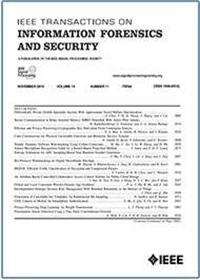Nighttime Person Re-Identification via Collaborative Enhancement Network With Multi-Domain Learning
IF 6.3
1区 计算机科学
Q1 COMPUTER SCIENCE, THEORY & METHODS
IEEE Transactions on Information Forensics and Security
Pub Date : 2025-01-08
DOI:10.1109/TIFS.2025.3527335
引用次数: 0
Abstract
Prevalent nighttime person re-identification (ReID) methods typically combine image relighting and ReID networks in a sequential manner. However, their performance (recognition accuracy) is limited by the quality of relighting images and insufficient collaboration between image relighting and ReID tasks. To handle these problems, we propose a novel Collaborative Enhancement Network called CENet, which performs the multilevel feature interactions in a parallel framework, for nighttime person ReID. In particular, the designed parallel structure of CENet can not only avoid the impact of the quality of relighting images on ReID performance, but also allow us to mine the collaborative relations between image relighting and person ReID tasks. To this end, we integrate the multilevel feature interactions in CENet, where we first share the Transformer encoder to build the low-level feature interaction, and then perform the feature distillation that transfers the high-level features from image relighting to ReID, thereby alleviating the severe image degradation issue caused by the nighttime scenario while avoiding the impact of relighting images. In addition, the sizes of existing real-world nighttime person ReID datasets are limited, and large-scale synthetic ones exhibit substantial domain gaps with real-world data. To leverage both small-scale real-world and large-scale synthetic training data, we develop a multi-domain learning algorithm, which alternately utilizes both kinds of data to reduce the inter-domain difference in training procedure. Extensive experiments on two real nighttime datasets, Night600 and RGBNT基于多领域学习的协同增强网络夜间人物再识别
本文章由计算机程序翻译,如有差异,请以英文原文为准。
求助全文
约1分钟内获得全文
求助全文
来源期刊

IEEE Transactions on Information Forensics and Security
工程技术-工程:电子与电气
CiteScore
14.40
自引率
7.40%
发文量
234
审稿时长
6.5 months
期刊介绍:
The IEEE Transactions on Information Forensics and Security covers the sciences, technologies, and applications relating to information forensics, information security, biometrics, surveillance and systems applications that incorporate these features
 求助内容:
求助内容: 应助结果提醒方式:
应助结果提醒方式:


